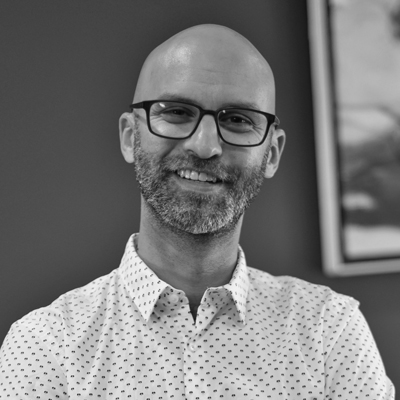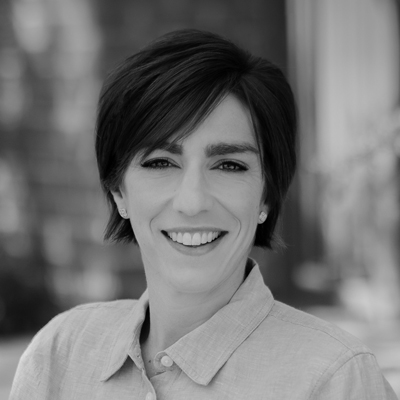Azrieli 基金会是加拿大商人和慈善家戴维·阿兹列利建立的,其资助CIFAR设立Azrieli全球学者计划,为年轻学者提供资金和支持,以帮助早期职业研究人员建立他们的学术网络并培养基本技能,帮助他们发展成为下一代研究领导者。来自世界任何地方的首次学术任命后五年内的研究人员都有资格申请。
近日,CIFAR Azrieli全球学者名单公布,名单如下:
Meet the 2022-2024 CIFAR Azrieli Global Scholars

Ashok Ajoy
Quantum Information Science
(University of California, Berkeley)
Ashok Ajoy and his research team are interested in harnessing the power of quantum technologies to address outstanding real-world challenges in the chemical sciences. A particular focus is the innovation of “quantum enhanced” methods of nuclear magnetic resonance (NMR) to study complex systems.

Yacine Ali-Haimoud
Gravity & the Extreme Universe
(New York University)
Yacine Ali-Haïmoud’s research aims to understand the nature of dark matter, which permeates the Universe, and remains an unsolved mystery. He seeks out hints about what kind of new particle dark matter might be by studying imprints it may leave in the cosmic microwave background.

Zakaria Al Balushi
Quantum Materials
(University of California, Berkeley)
Zakaria Al Balushi focuses on electronic materials synthesis of thin films (compound semiconductor heterostructures, quantum materials, etc.) and nanostructures (2D materials, nanowires, quantum dots, etc.) using a variety of chemical vapour deposition (CVD) techniques.

Chibueze Amanchukwu
Bio-inspired Solar Energy
(University of Chicago)
Chibueze Amanchukwu’s work involves re-envisioning CO2 – instead of fossil fuels – as a resource for a new chemical industry. His research group combines undesired CO2 as the carbon source, H2O as the proton source, and electrons from renewable electricity as the energy source to make desired products.

Natalie Hiromi Brito
Child & Brain Development
(New York University)
Natalie Hiromi Brito is a developmental psychologist with training in neurobehavioral assessments, parent-child interactions, and electroencephalography (EEG). Her work broadly focuses on how early social and cultural contexts shape the trajectory of neurocognitive development.

Eva Dyer
Learning in Machines & Brains
(Georgia Institute of Technology)
Eva Dyer’s research combines machine learning and neuroscience to understand the brain, its function, and how neural circuits are shaped by disease. Her lab, the Neural Data Science (NerDS) Lab, develops new tools and frameworks for interpreting complex neuroscience datasets and building machine intelligence architectures inspired by the brain.

Alex Frañó
Quantum Materials
(University of California, San Diego)
Alex Frañó is a condensed matter experimentalist whose research intersects fundamental materials science, neuromorphic computing, and mesoscopic self-assembly phenomena. His research group specifically looks at strongly correlated electron systems, also known as quantum materials because of the baffling properties of the electrons in these materials, and various forms of x-ray scattering tools to probe them.

Ariel Furst
Bio-inspired Solar Energy
(Massachusetts Institute of Technology)
Ariel Furst’s research focuses on integrating the tools of chemical and biological engineering with electrochemistry. Furst’s lab develops inexpensive, deployable technologies to improve human and environmental health, while training and educating the next generation of scientific leaders.

Amanda Lea
Child & Brain Development
(Vanderbilt University)
Amanda Lea uses anthropological and genomic approaches to study early life effects on molecular processes and health in international populations experiencing rapid sociocultural change. She complements this field-based work with lab-based experiments to study how early life effects “get under the skin” to impact cellular function.

Qiong Ma
Quantum Materials
(Boston College)
Qiong Ma’s research is to discover and understand complex materials for emergent functions. By gluing together individual constituents of materials and turning on the interactions between them, materials exhibit collective behaviours that cannot be expected from the microscopic constituents, giving rise to emergent functions. Ma’s lab aims to understand and utilize those emergent functions for new technology.

Katherine Mack
Gravity & the Extreme Universe
(Perimeter Institute for Theoretical Physics & North Carolina State University)
Katherine Mack’s research focus is in cosmology: the study of the history, evolution, composition, and future of the cosmos. Rather than pursuing theory building or data-gathering, she works in phenomenology, which aims to make connections between a physical theory and its observational or theoretical implications.

Eva Nichols
Bio-inspired Solar Energy
(University of British Columbia)
Eva Nichols’ research interests center around the development and understanding of catalysts for the electrochemical reduction of oxidized carbon into valuable products. Her research group works to improve catalyst activity and selectivity using lessons from biology by applying general design principles from CO2-fixing enzymes to synthetic molecular and materials-based systems.

Emma Pierson
Learning in Machines & Brains
(Cornell Tech and Technion - IIT)
Emma Pierson uses AI to try to create a more equitable world. AI gives us a superhuman ability to gaze into complex new datasets; we can use this ability to increase social equity by carefully choosing where we look and prioritizing the people we've previously ignored.

Benjamin Rosman
Learning in Machines & Brains
(University of the Witwatersrand)
Benjamin Rosman’s research asks how the knowledge gained from robots and other artificial agents solving one task can be reused in the next, by drawing insight from humans’ ability to decompose complex problems into reusable pieces.

Danielle Roubinov
Child & Brain Development
(University of California, San Francisco and University of North Carolina, Chapel Hill)
Danielle Roubinov is interested in how experiences of stress affect children’s bodies and minds during sensitive periods in the first several years of life. She studies how childhood adversity can affect early biological and behavioural mechanisms that increase children’s risk for developing poor psychological health, as well as different protective factors that promote resilience.

Paul Skrzypczyk
Quantum Information Science
(University of Bristol)
Paul Skrzypczyk’s research focuses on the full spectrum of fundamentally new and extraordinary ways in which quantum entanglement allows us to process information and what this, in turn, teaches us about the very fabric of nature.

Pablo Solano
Quantum Information Science
(Universidad de Concepción)
Pablo Solano is interested in studying how matter interacts with light. Atoms are the building blocks of everything around us, and the key to unlocking and harvesting the properties of the quantum world. Solano’s research focuses on the physical effects and possible applications of interconnecting atoms at a distance. Coincidently, such platforms also interconnect experimental and theoretical aspects of atomic physics, quantum optics, and quantum information sciences.

Shriharsh Tendulkar
Gravity & the Extreme Universe
(Tata Institute of Fundamental Research & National Centre for Radio Astrophysics)
Shriharsh Tendulkar studies astrophysical transients — extremely violent events such as the mysterious fast radio bursts (FRBs) and other explosions in the Universe that last for thousandths of a second, yet release more energy than the Sun does in a thousand years. These bursts are our laboratories to study how matter, light, and magnetic fields behave in extreme environments and serve as probes to study the structure of the Universe.
内容中包含的图片若涉及版权问题,请及时与我们联系删除



评论
沙发等你来抢